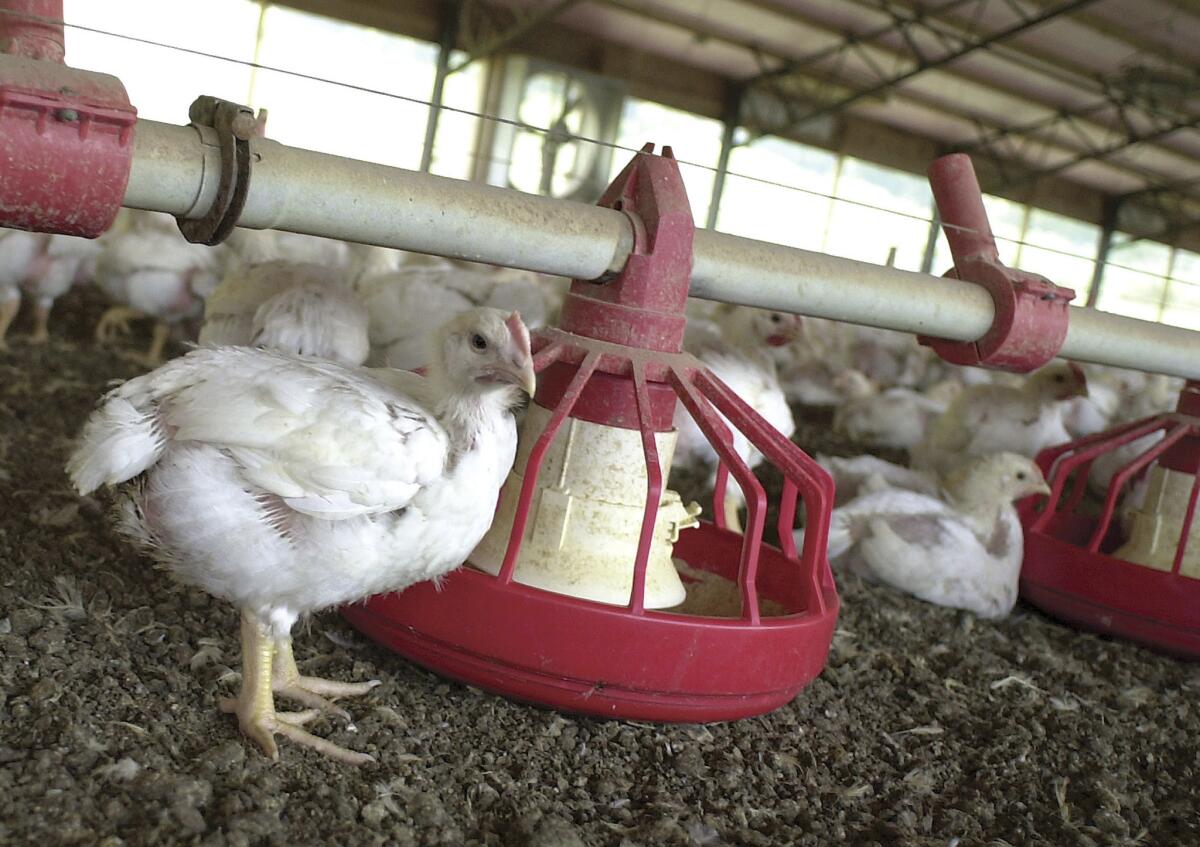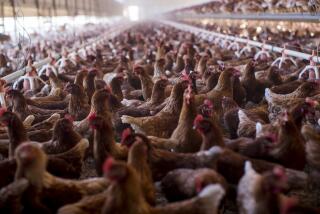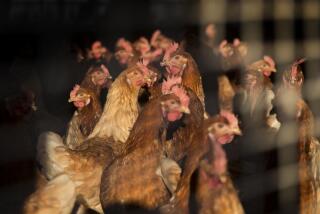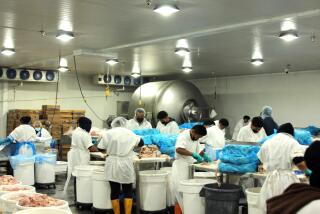Chicken workers in diapers — more evidence of the high cost of cheap meat

- Share via
Chicken is so cheap these days that it was not a complete surprise to read the Oxfam America report (cleverly titled “No Relief”) about how poultry workers in U.S. plants are run so ragged that they are denied bathroom breaks. As a result, some say they have resorted to using diapers while on a shift.
Nor was it news that it’s grueling work to process chickens. A report by the Southern Poverty Law Center, “Unsafe at any Speed,” blasted plants for line speeds so fast that they led to high numbers of worker injuries.
Terrible stories, to be sure, but they are not the only costs that come, indirectly, with 79-cents-a-pound fryers.
There are the years of rampant prophylactic use of antibiotics, a practice that is finally starting to ebb and will hopefully stave off the development of more antibiotic-resistant bugs.
There are the horrific conditions found at poultry farms — something that California voters tried to change in 2008 with Proposition 2, a measure that freed egg-laying hens from tiny cells.
And there’s the loss of flavor that comes with selective breeding to get the biggest chickens to mature in the shortest amount of time. Mark Schatzker describes these animals in his engaging book, “The Dorito Effect,” as gigantic babies.
Bigger and cheaper? No wonder we’re a chicken-loving country. Americans eat way more chicken than any other meat. This wasn’t always the case. Look at the chart linked here and you’ll see that in 1960, Americans ate twice as much beef as chicken. Now it’s the opposite.
For those who love chicken, but are put off by the whiff of despair that might come with it, there are options. There are boutique poultry farms that produce cage-free hens and tasty (if super pricey) organic meat. Consumers can also demand changes from food companies -- which do listen because their entire business depends on giving customers what they want.
The bottom line is that if Americans want diaper-free broilers, they are going to have to pay for them.
Twitter: @marielgarzaLAT
More to Read
A cure for the common opinion
Get thought-provoking perspectives with our weekly newsletter.
You may occasionally receive promotional content from the Los Angeles Times.











